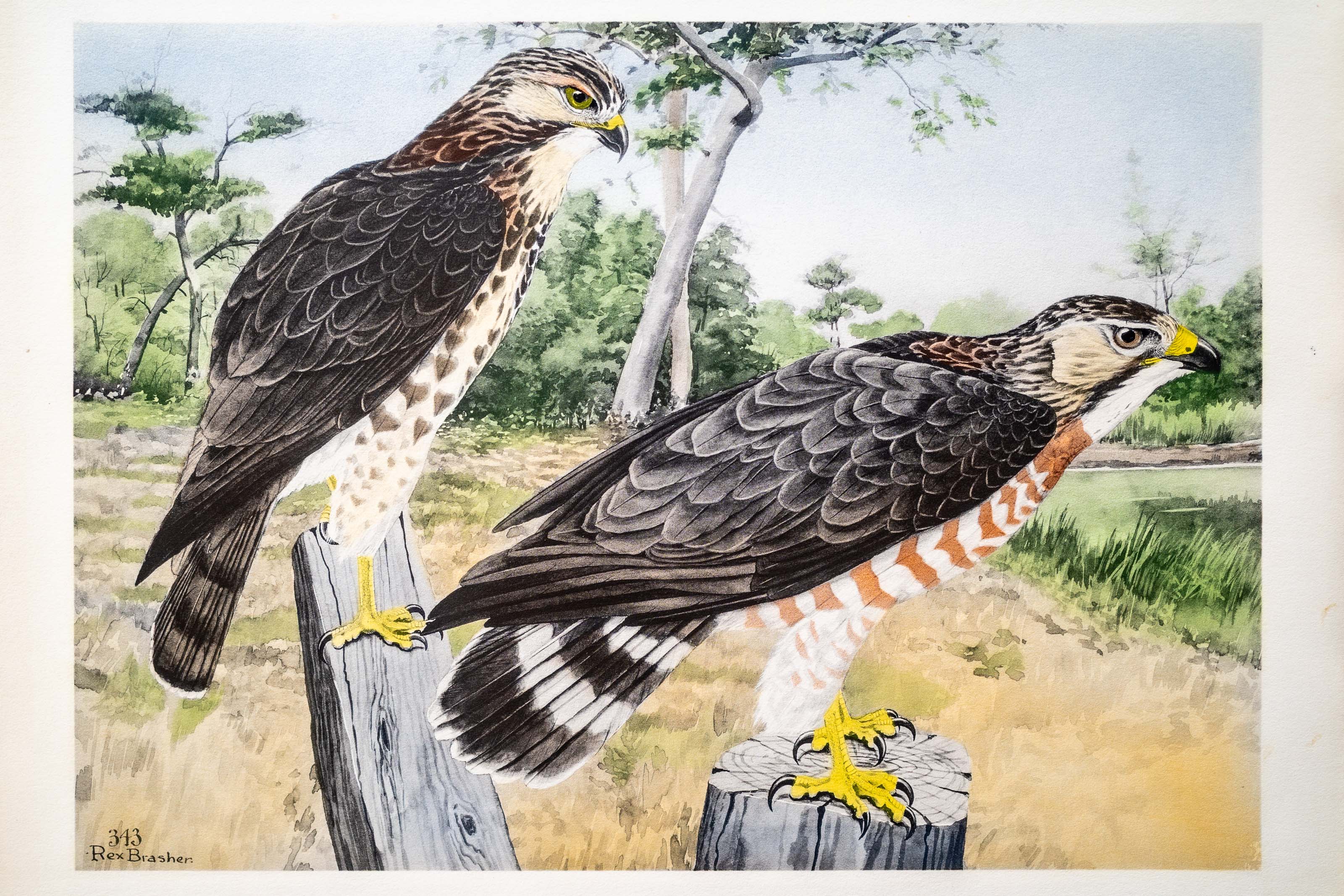

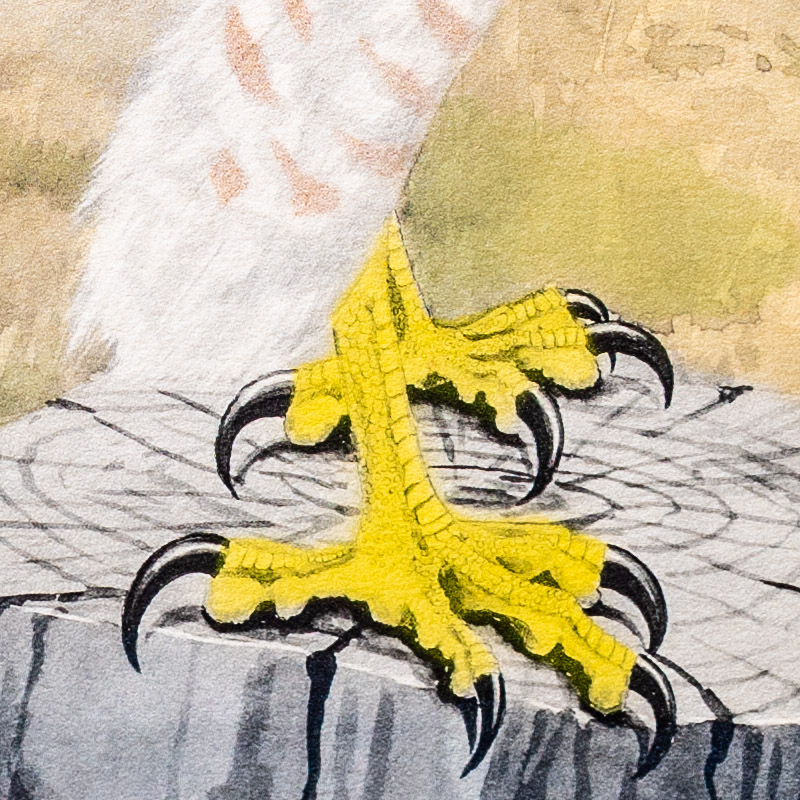
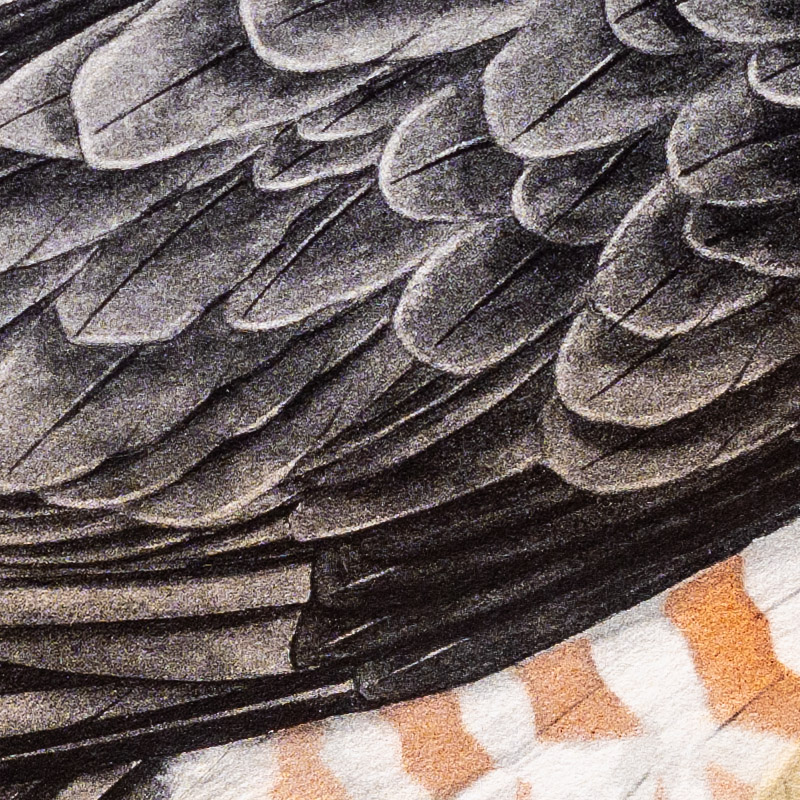
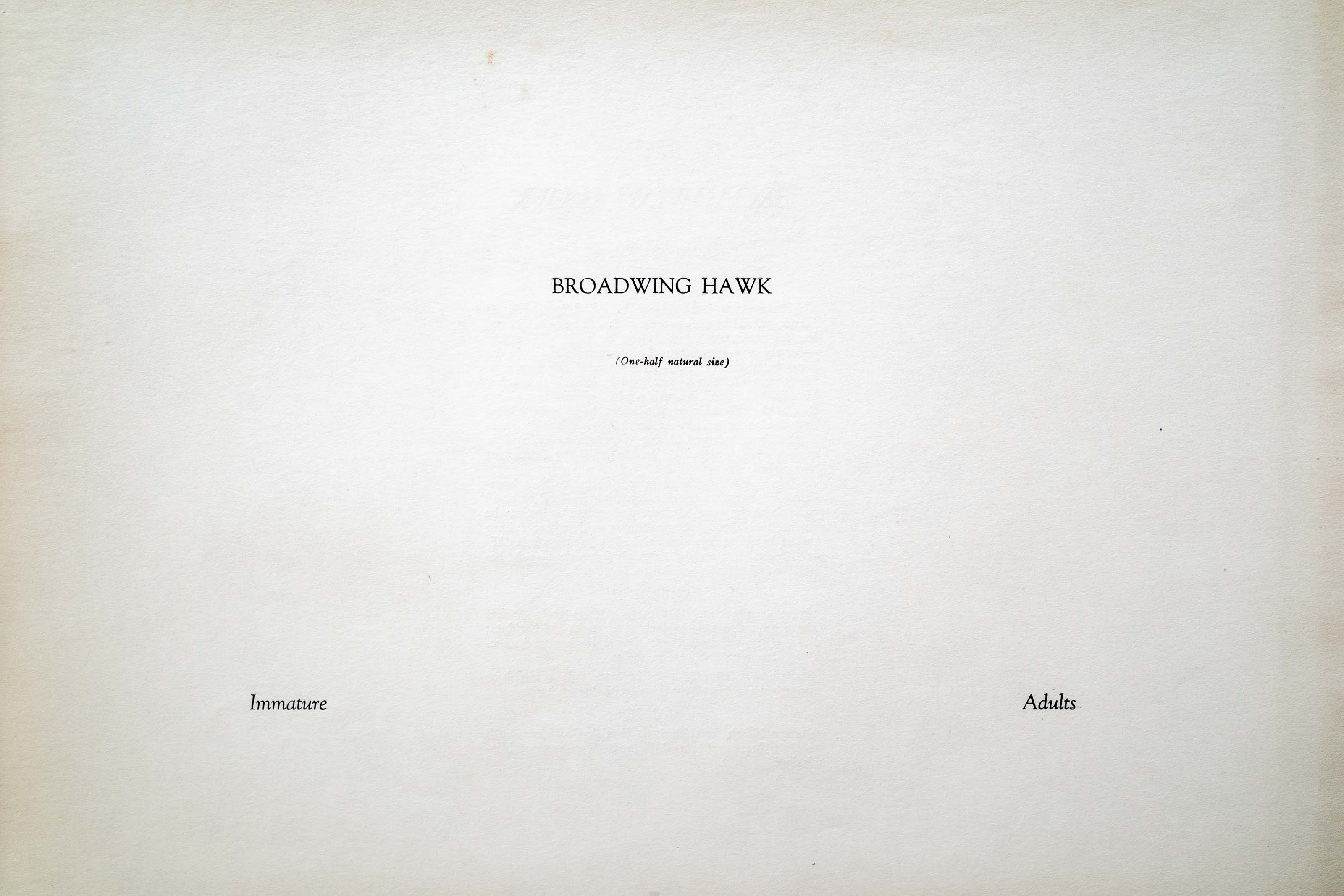
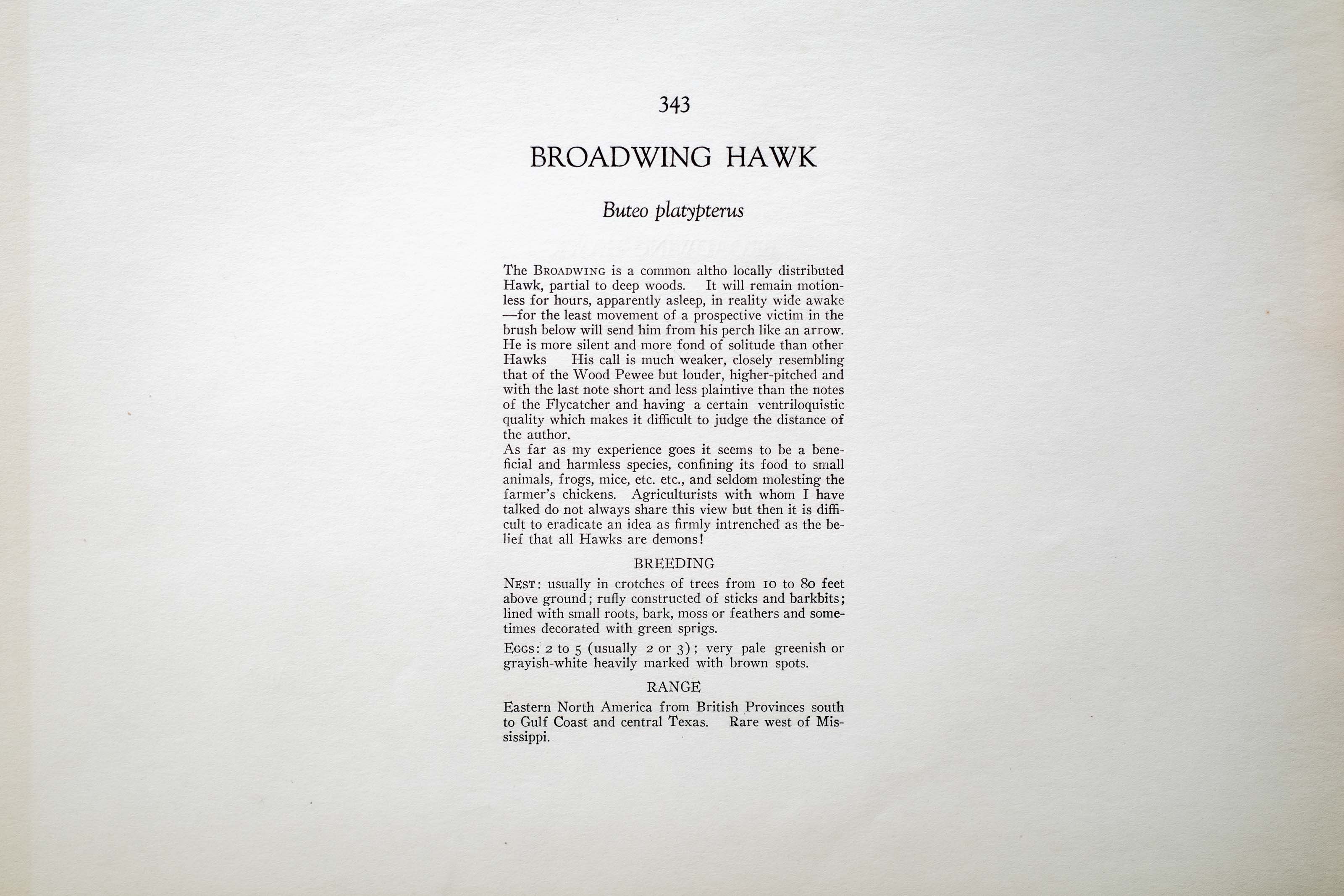

Unknown
1930
5
343
A team of dedicated board members, volunteers, and student interns has published every page in Volume 9. This volume includes 360 images of paintings and lyrical descriptions of birds, now available online for everyone to enjoy anywhere in the world. This is a monumental task. Each volume requires approximately 400 hours to photograph, edit, transcribe, catalog, and publish online. We need your support to complete this work.
If you're tech-savvy, have a good eye, are meticulous with details, and love structured data, please consider volunteering by emailing us at hello@rexbrasher.org.
We encourage all bird lovers and supporters to consider a monetary donation to support our mission to make Rex's work available for everyone. You can provide a one-time or recurring donation online.
The BROADWING is a common altho locally distributed Hawk, partial to deep woods. It will remain motionless for hours, apparently asleep, in reality wide awake — for the least movement of a prospective victim in the brush below will send him from his perch like an arrow. He is more silent and more fond of solitude than other Hawks. His call is much weaker, closely resembling that of the Wood Pewee but louder, higher-pitched and with the last note short and less plaintive than the notes of the Flycatcher and having a certain ventriloquistic quality which makes it difficult to judge the distance of the author.
As far as my experience goes it seems to be a beneficial and harmless species, confining its food to small animals, frogs, mice, etc. etc., and seldom molesting the farmer's chickens. Agriculturists with whom I have talked do not always share this view but then it is difficult to eradicate an idea as firmly intrenched as the belief that all Hawks are demons!
NEST: usually in crotches of trees from 10 to 80 feet above ground; rufly constructed of sticks and barkbits; lined with small roots, bark, moss or feathers and sometimes decorated with green sprigs.
EGGS: 2 to 5 (usually 2 or 3); very pale greenish or grayish-white heavily marked with brown spots.
Eastern North America from British Provinces south to Gulf Coast and central Texas. Rare west of Mississippi.